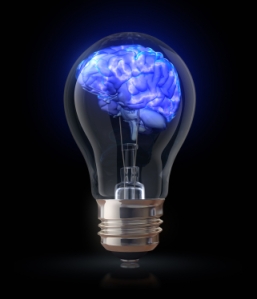 Here is an activity that college professors demonstrate in their classrooms to help their students use visualization to exercise creativity. You can do the same thing at home with your children.
Here is an activity that college professors demonstrate in their classrooms to help their students use visualization to exercise creativity. You can do the same thing at home with your children.
Take an ordinary light bulb and show it to your children. Ask them to close their eyes and see if they can still visualize the light bulb in their minds. Ask them if they can see the light bulb in their imagination. Then ask them, with their eyes still closed, to visualize the following:
Turn the light bulb on.
Turn it off.
Turn the light on.
Change the color to blue.
Change the color to yellow.
Change the color to green.
Change the color to orange.
Make the light bulb bigger.
Change the light bulb into a television screen.
See your favorite program on the screen.
Change the channel.
Turn the television off.
See another light bulb.
Turn it into a flashlight.
Shine the flashlight on a dog.
Make the dog bigger.
Turn the dog into a cat.
Hear the cat meow.
Turn the cat into a bird.
Put a light bulb in each hand.
In your mind, pretend that your light bulbs are jet engines and run down the street for a take-off.
Zoom off into the air.
Circle over the house.
Circle over the city.
Zoom away and look at the mountains.
Zoom back to the house.
Throw the light bulbs away and open your parachute.
Float down into the back yard and tell someone that you are home.
Now have them open their eyes. Talk about how they were able to turn a light bulb into a jet plane just by using their imagination.
Use visualization exercises often with your children to help them stretch the boundaries of their imagination. You can have them visualize the spaghetti on their plate turning into a rope in an adventure, or the bridge you pass under on a road trip getting wider and wider until it becomes a bridge from Earth to another planet and have them walk over it and see what they discover – any object can be used in any setting to help your children exercise their creativity in this way. As in the example above, ask them to visualize their object being used on other things or turning into something; get them to visualize color and light and action and things getting bigger and smaller. The purpose is for you to guide them into their creating the most unique, animated, multi-dimensional pictures in their minds and for them to visualize using all their senses by using their imagination, even though they aren’t, in actuality, using any of them.
The above exercise was adapted from Robert F. Eberle, “Developing Imagination Through Scamper”.
